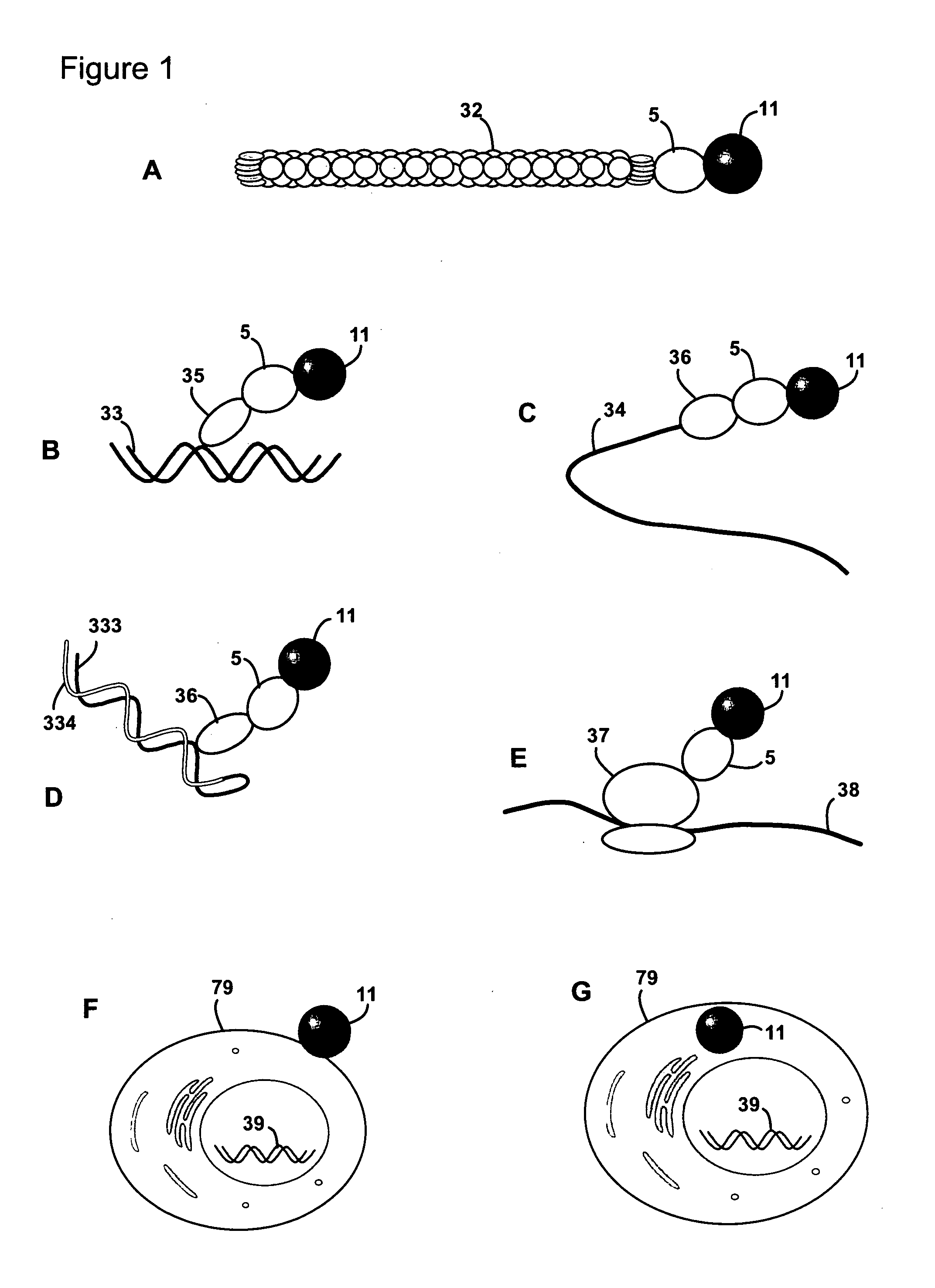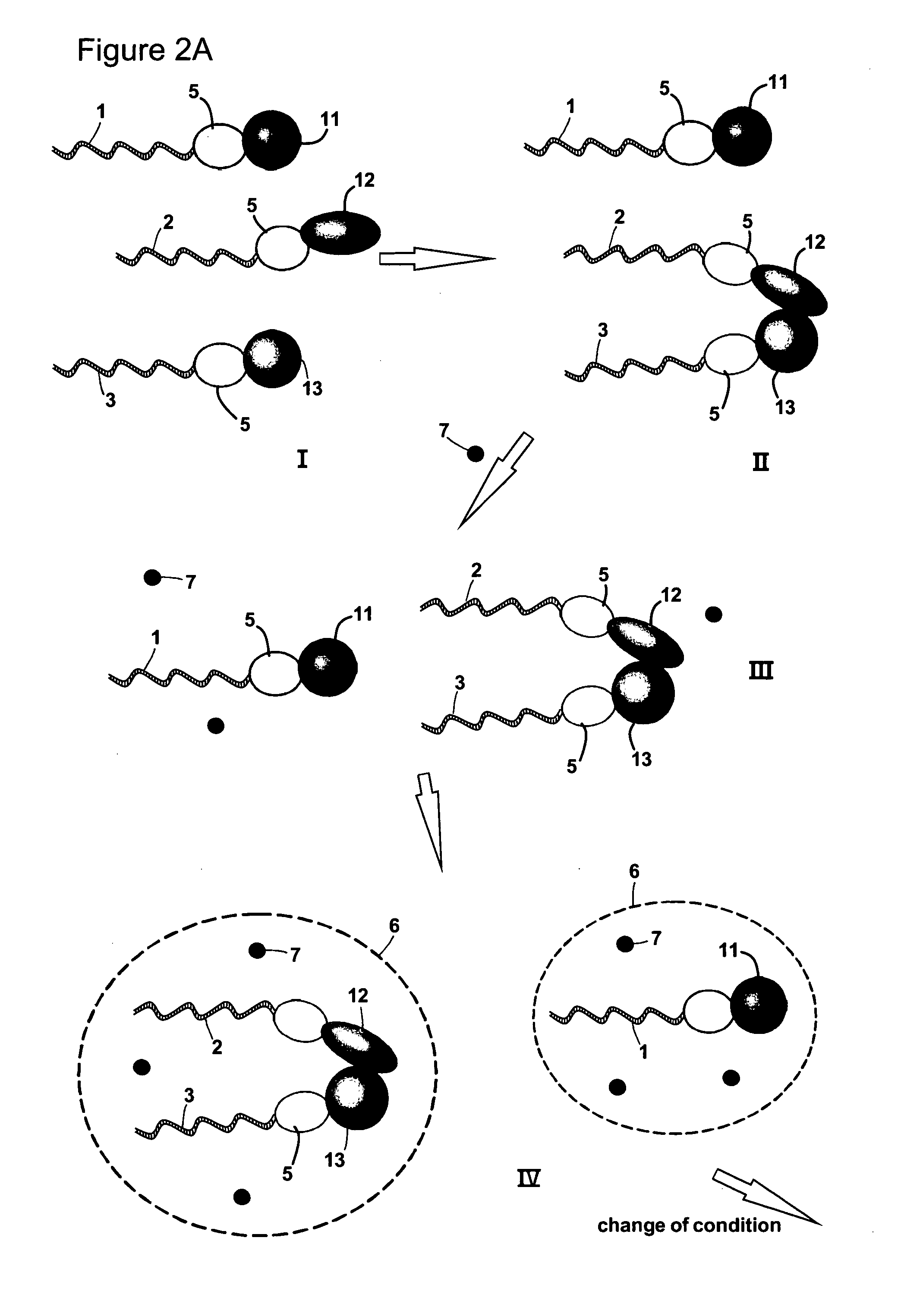Methods of identifying a pair of binding partners
a technology of binding partners and methods, applied in the field of methods of identifying a pair of binding partners, can solve problems such as inpracticality
- Summary
- Abstract
- Description
- Claims
- Application Information
AI Technical Summary
Benefits of technology
Problems solved by technology
Method used
Image
Examples
Embodiment Construction
[0038]Protein-protein interactions are fundamental constituents of all biological processes. Many techniques have been developed to uncover the global protein-protein interaction network in the cell. Two-hybrid methods, especially genome-wide yeast two-hybrid screens, have for example been regarded as promising in this context, because they enable in-parallel and in vivo interrogation of all possible binary interactions. However, these efforts are limited by throughput issues, sequencing capabilities and the primary information content of these screens is not in a convenient format.
[0039]The present invention provides methods of identifying a pair of binding partners. Hence, the method may in some embodiments also be defined as a method of determining whether a target molecule interacts with, i.e. binds to or forms a complex with, any member of a plurality of analyte molecules. A method according to the invention may be carried out as a screening method, including a high-throughput ...
PUM
 Login to View More
Login to View More Abstract
Description
Claims
Application Information
 Login to View More
Login to View More - R&D
- Intellectual Property
- Life Sciences
- Materials
- Tech Scout
- Unparalleled Data Quality
- Higher Quality Content
- 60% Fewer Hallucinations
Browse by: Latest US Patents, China's latest patents, Technical Efficacy Thesaurus, Application Domain, Technology Topic, Popular Technical Reports.
© 2025 PatSnap. All rights reserved.Legal|Privacy policy|Modern Slavery Act Transparency Statement|Sitemap|About US| Contact US: help@patsnap.com



